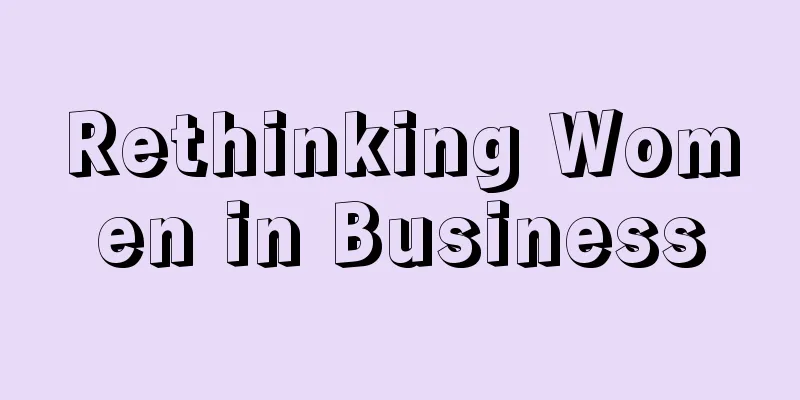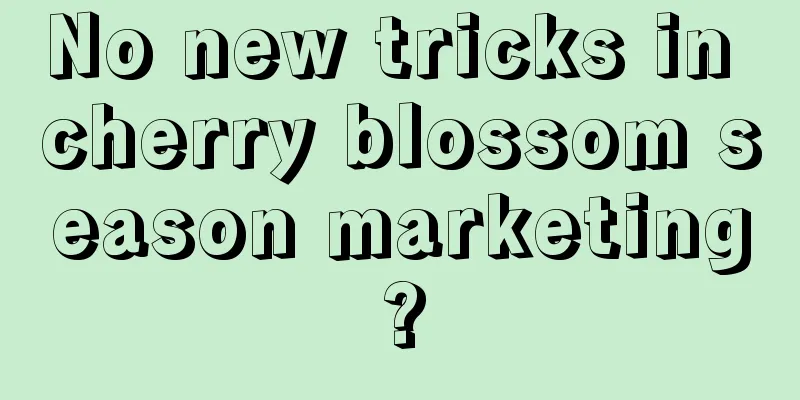Rethinking Women in Business

Do you know PROYA? The brand, which owns many popular exquisite skin care, cosmetics and cleansing products, suffered a setback on Women's Day. The theme of the marketing campaign was "Gender is not the boundary, prejudice is". During the implementation, five users were invited to share their experiences with prejudice, including two male perspectives, which caused dissatisfaction among everyone. Netizens believe that in a festival dominated by women, brands should focus on women and should not introduce male narratives. The chain restaurant brand "Subway" also had a snafu a few days ago; in their "Women's Day Stickers" campaign, netizens discovered that the copy was full of "sexual innuendo". My God, in this era, they still dare to make dirty comments. Needless to say, it caused huge controversy. Awesome, awesome. Ten years ago, people would think this type of marketing is nothing, just to attract public attention, but now, people find that women's issues are more cautious. If it is done well, it will cause widespread discussion, but if it is not done well, a basket of bad things will be exposed to you. It has to be said that with the awakening of women's consciousness today, brand communication language is becoming more and more complex and more and more difficult. 01What is so complicated and difficult about it? Let me tell you an experience. A few days ago, I was drinking coffee with a friend and we suddenly talked about the topic of "beauty". One of my friends said: "I recently joined a fitness club. Losing weight is very important. People will judge a person by their appearance. Keeping a good body can leave a good impression on others." Another friend said: I understand your idea, but I think health and happiness index come first. There are many people like me who do not have a slim body and cannot lose weight. What should I do? In addition to paying attention to diet management, I can only bravely accept imperfections. Yes, in a diverse society, everyone has unique values and lifestyles. After seeing countless marketing promotions, women are increasingly able to distinguish what they want. This is the first point. Second, it is increasingly difficult to find a point that perfectly matches women in brand promotion. Imagine a woman with type I personality who has always liked a certain brand. Suddenly one day, the brand strongly promotes that women should show courage and change the inherent pattern. Will such information confuse or even alienate the "i-group"? After all, not everyone can easily make changes, especially for those who tend to remain stable and avoid taking risks. This brings us to the third point: the balance between diversity and uniformity. Diversification strategies can undoubtedly help brands reach a wider audience and demonstrate respect and inclusiveness for different women's identities, personalities, and life choices, which is definitely a good thing. However, if you express everything, in the end no impression may be left. A focused communication strategy can indeed make the brand expression clearer and more prominent, but if it is too narrow, it will lack originality and be easily imitated. I remember a lingerie brand that used to focus on large sizes. It initially positioned itself in the "large size" market and received good market response. But soon competitors followed suit. If you dig deeper, you will find that there are different needs and preferences within the large size group. Therefore, how to balance the two is indeed a problem faced by many brands at present. Another point is that women have different consumption expectations. I have done a survey, and found that people have different focuses when buying things. Some said that they pay special attention to product quality and make sure they buy good value for money, while others said that brand values and the attitude towards life it represents would be one of their considerations. At other times, consumer experience and comfort are equally intuitively important. Celebrity endorsements can also attract attention. Tan Jianci has been particularly popular recently, and products related to him seem to be particularly popular. There are also corporate social responsibility (CSR) activities that will affect purchasing decisions. Brands that contribute to environmental protection and public welfare will make them feel that they are also contributing to society after consumption. You see, female consumption is like a multifaceted entity, and the mental accounts of a certain commodity in different scenarios are completely different. I will pay for an expensive commodity without hesitation, but I will think twice before signing up for a membership on a video platform, and I will save money wherever possible. A series of problems combined, the communication between brands and consumers is indeed facing huge challenges. With so many problems, what should we do? How to solve them? Where is the boundary between women's business and women's marketing? To solve this problem, we must trace the root cause and analyze it from the development of "women's issues". 02Did you know? From the early 20th century to before the 1960s, women were portrayed as virtuous and gentle in advertisements, and were more often used as symbols of desire projection and male perspective. for example: In cosmetics ads, emphasis is placed on women’s appearance and family roles, and household products are linked to cooking and entertaining guests. A Parker pen ad even directly uses the slogan “For every girl, a man’s appreciation is more important than doing math homework.” This shows that women's value depends largely on men's views. From the 1960s to the 1980s, there was a significant difference. Women began to fight for more rights and opportunities in the social, economic and political fields. They were no longer satisfied with being housewives and men's foils, and began to be seen as awakened and independent. At this time, women in advertisements were portrayed as individuals with needs, emotions, and thoughts, and brands began to emphasize women's personal choices and pursuit of self-realization. for example: Procter & Gamble's products such as Swiffer feature images of "super moms" and "working moms," showing women seeking a balance between family and work. Twenty years later, between 1990 and 2010, the image of women in commercials was completely changed. During this period, with the improvement of education and social status, brands realized that women had considerable purchasing power and began to become the intermediate force of consumption. In line with political and economic development, the advertising industry has also begun to emphasize gender equality, proposing that women should enjoy the same career opportunities and rights as men; focusing on themes such as "self-achievement". Just to name a few examples: Unilever's Dove brand launched the "Real Beauty Movement" in 2004, challenging the definition of traditional beauty and encouraging acceptance of all types of beauty. This concept has sparked widespread discussion around the world. De Beers’ “Ring for the Right Hand” campaign directly encourages women to buy themselves diamond rings to commemorate special moments. CoverGirl positions cosmetics as a tool to emphasize that true beauty comes from women’s confidence and strength, etc… High development brings high expansion. Once businesses find the secret to making money, they will increase their investment without hesitation. Especially with the rise of the Internet and e-commerce, the phenomenon of women's empowerment became more obvious in the ten years from 2010 to 2020. The consumer market entered a new era of greater personalization and customization. Psychological constraints were completely liberated, and women's thinking and attitudes were more revealed. During this period, the focus of advertising shifted to content creativity and storytelling, attracting consumers through emotional resonance. Many brands invited celebrities, talk show hosts, and models to join, and tried cross-border collaborations to explore the diverse relationship between women and the world. In order to capture consumers' attention, brands seek interesting and controversial marketing strategies. In the middle of the stage, creative copywriting is widely welcomed. However, over time, female consumers began to express their disgust with ironic, vulgar, and clever marketing advertisements, and people began to openly question these marketing techniques. for example: In 2017, Juewei Duck Neck was criticized for its sexually suggestive slogan "Fresh and juicy, do you want it?"; then, in 2018, Didi Chuxing's advertisement showed a man dating a woman through Didi, which was considered to convey the wrong values. In view of the growing awareness of gender equality and respect, women have begun to fight back openly. As of 2022, no less than 20 pieces of content have been complained about, such as Coco Tree's "Borderline" and Fuyangjie's "selling anxiety." Comparing the above timeline, it is clear that women's status in consumer marketing has gone through four stages: First, as a subsidiary role in economic activities; second, starting to return to self and accept the real self; third, becoming the central force in consumer activities; fourth, showing independent consciousness, rich emotions and profound thoughts. Therefore, these stage changes clearly show that women have changed from being just marketing targets to independent individuals with initiative, self-awareness and consumption decision-making ability. This change is a reinforcement and affirmation of the concept of women's rights and equality. 03What are women's rights? They are the rights that women should enjoy. Macro-level gender discrimination, gender-based violence, and the fight for legal reforms that are more friendly to women, as well as the push to make the law more considerate of women. On a micro level, women should be treated equally in the workplace, such as having fair opportunities for promotion and salary increase, and protecting women from violence at home or in society. However, some topics are socially sensitive and cannot be changed by brands; however, some can be reshaped with a friendly business perspective. For example: Have you ever encountered this kind of situation when you go shopping in a mall: the entrance of the women's restroom is crowded with people, while the men's restroom is empty? Do you think it is unfair? Why can men go to the bathroom anytime, but women have to waste time and energy? This problem is quite common and easy to solve. If shopping malls could have more women's restrooms and some small rest areas specifically for women, with some sanitary napkins, mirrors, and dressing tables, the experience for girls would be much more comfortable. Although the improvements may seem small, they reflect attention and respect for women's needs. For example: Take fitness and sports nutrition products as an example. In advertisements, men are always portrayed as pursuing strength and muscle growth, emphasizing that products such as protein powder and fitness supplements are good for physical fitness. What about female ads? Most of them revolve around weight loss and slimming, as if they should only care about calories. Such ads are not only sexist, but also ignore the fact that women also pay attention to strength training and have a great need to improve physical fitness and increase muscle strength. In car marketing, men are often positioned as the main drivers of cars, and women are either secondary or decorative. In fact, women have a great influence on car purchases, and they know as much about cars as men. It is not difficult to see what fair treatment is through examples. You may ask, why should it be fair? Because women not only have strong purchasing power, but also have unique emotions and aesthetics. They are consumers, creators, leaders, and influencers. Therefore, when rethinking "women's business", we should establish a new way of thinking and business perspective. The so-called new business perspective is a new way of looking at things, a new angle, mainly involving two core links:
Do you remember the Li Dan incident in 2021? He posted an advertisement for women's underwear on Weibo, using the words "a piece of equipment that allows women to easily win in the workplace", which caused dissatisfaction among many people; in the end, he was fined 876,721.31 yuan by the Beijing Haidian District Market Supervision Bureau. Have you ever noticed: Why is a borderline copy so serious? In fact, the incident reflects the problems of the entire industry chain. Anyone who has worked in a job knows that all advertising copy and promotional materials are prepared by the marketing team, and celebrities and brands are just "tools" to push content to the market. In abstract terms, the production chain is a process. If the values of each participant are biased during the process, the result will not be very good. So, what is the result? It can be summed up in four words: "female experience". From another perspective, only when everyone in the process can respect women can a truly female-friendly business environment be created. Only in this way can women-related businesses move in a more positive and fair direction. 04Well, the theory is good, but how can it be implemented in reality? Share a few thoughts: A friend of mine went to Haikou and mentioned to me that Haikou MixC left a deep impression on her. I asked her curiously what happened. She said that there is a special "bracelet cabinet" at the entrance of the mall, which contains three types of bracelets: pink, purple and gray; pink means I have time and can take my time to choose; purple means I don't want to be disturbed and want to shop quietly; gray means I want to shop quickly. I was shocked by this creativity because I have never seen it in Beijing shopping malls. She said, there is more. What else? There are hair styling kits, band-aids, brown sugar ginger tea, hand warmers, and heel pads in the women's restroom. I couldn't help but be surprised when I heard this. Many boys may not even think of these thoughtful preparations when shopping, let alone do them. It's too detailed. The question is, what about online brands? Considering that menstruation is a natural phenomenon for women, the media often avoids the topic of menstruation in public discussions, and in advertisements for sanitary products, the actual color of menstrual blood is often replaced by the traditional blue. Libresse Bodyform, a sanitary napkin brand under Essity, launched the "#BloodNormal" advertisement in 2017, using real red instead of traditional blue liquid for the first time, with the aim of breaking the stereotype of menstruation. Later, they launched a series of advertisements to allow the public to have multiple understandings of women's physiological and emotional aspects, including fertility, menopause and body self-identity. This initiative later won multiple awards. What do I want to tell you? Marketing is to deeply explore the shame that women find difficult to express in various situations. You can use a public welfare perspective to express your position sincerely, rather than using traditional demand exploration and anxiety-selling methods to advocate everything. It doesn't mean that you can say what you want to say. The beverage brand Hope Water has launched the #Marry100Girls# IP theme event for three consecutive years, from an internal invitation system to an open one. From "What is happiness", to examining "us" from a female perspective, to "I married myself", like a gentleman, we work together with the girls to break out of the limitations of real life and the labels given by society, and discuss how to love ourselves more. Well, just a few simple examples, I wonder if other brands should accept something new, abandon the traditional model of selling anxiety and atomizing women, and establish a new, female-friendly business perspective? So, is this a new look at women's business? Maybe you have a new answer. In summary: Respect women, harmony and beauty. Friendly business will become more popular in the future, and marketing will also undergo qualitative changes. Paying attention to inner beauty and the stories behind it is an innovation and progress. Author: Wang Zhiyuan, public account: Wang Zhiyuan |
<<: Middle-aged and elderly women's clothing is becoming a hot topic in the e-commerce industry
Recommend
Cheng Shian stopped updating, Luo Wangyu "crashed": Why is the beauty and cosmetics track declining?
From the hottest track to the current situation wh...
Save money or make money? Young people want everything in their "second-hand life"
As consumption concepts become increasingly divers...
Has McDonald's also learned the art of being stingy?
After the McDonald's Poor Man's Meal, is t...
Dongfang Zhenxuan’s first Taobao show had a GMV of over 100 million! I don’t want to just be a live broadcast room!
Oriental Selection launched its first live broadca...
Cats and dogs spell "slash" short play: poison or antidote?
The rustic short dramas that once dominated Kuaish...
How to appeal if your shopee store is frozen? What are the methods?
Many sellers have given Shopee a very good review....
Tik Tok is having trouble getting past Meituan
After developing the local group-buying business, ...
Business growth case: There is no secret in marketing, the brand survives to the end
This article analyzes the reasons for the growth o...
618前,「仅退款」的168天
Previously, e-commerce platforms have launched the...
Four major marketing trends for private domain operations in 2024
Based on the marketing observations in the past ye...
How does Amazon identify restricted products? Full list of restricted products
Amazon restricted products refer to products that ...
One million private domain users, monthly GMV of nearly 10 million, a complete analysis of the private domain of the new tea beverage dark horse Bawang Chaji
In the fiercely competitive tea beverage market, m...
The new public account has been in the pool for more than a month. Behind the luck is your true knowledge.
Friends who are engaged in WeChat public account o...
The total number of online views exceeded 3 billion, and "scare yourself" swept the screen, controlling abstract netizens
In this era of information explosion and content b...
Kimi's way of making money is so abstract...
Have you used Kimi recently? Have you noticed the ...









